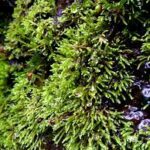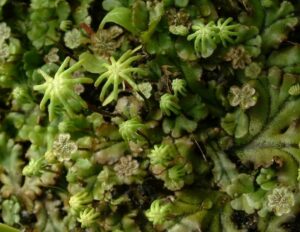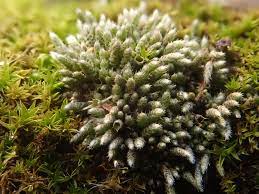A kind of plants which are nonvascular i.e., without a vascular system which should be made up with xylem and phloem. Some nonvascular plants examples are liverworts etc.
These plants are a type of plants which have no vascular system of water transport through xylem and phloem. Instead of this vascular function they may carry simple tissues that can have specialized functions for internal transport of water system. Nonvascular plants examples include plants like mosses, hornworts etc.
- Bryophyta (Mosses)
- Marchantiophyta (Liverworts)
- Anthocerotophyta (Hornworts)
- True mosses
- Sphagnales
- Polytrichales
- Andreaeopsida
- Hepaticopsida
- Oedipodiopsida
- Musciphyton
- Sheet Moss
- Cushion Moss
- Haircap Moss
- Rockcap Moss
- Complex thalloid
- Jungermanniopsida
- Jungermanniales
- Haplomitriopsida
- Anthoceros
- Anthocerotaceae
- Dendroceros
- Notothyladaceae
- Anthocerotales
- Anthoceros agrestis
- Notothylas
- Juniper Moss
- Java Moss
- Bank haircap
- Physcomitrella patens
- Funaria hygrometrica
- Sphagnum palustre
- Mountain Fern Moss
- Floating Crystalwort
- Silvery Bryum
- Phaeoceros laevis
- Frontalis Antipyretica
- Taxiphyllum Barbieri
- Schistostega
- Pleurozium Schreberi
- Dicranum Scoparium
- Monosolenium Tenerum
- Hypnum Cupressiforme
- Bartramia Pomiformis
- Brachypodium Sylvaticum
- Great scented liverwort
- Plagiomnium affine
- Horn calcareous moss
- Rhytidiadelphus squarrosus
- Branchypodium pinnatum
Bryophyta (Mosses)–
They are small, flowerless, nonvascular plants. This is under the taxonomic division of Bryophyta sensu stricto. It is also referred as the parent group of bryophytes. They form green thicket and mat like dense carpet often in damp or shady places.

Under this category the nonvascular seedless plants examples are mainly mosses like:
True mosses-
Largest class of mosses, 95% of all the moss species. Consists about 11500 species, common in the whole world.
Sphagnales-
An order of mosses with 4 living genera. In which Sphagnum is the largest of all the species discovered.
Polytrichales-
Common family in the mosses. It is different because of the thick central stem and a rhizome than other mosses. Leaves with a midrib and consists lamellae on the upper side of the plant.
Andreaeopsida-
Basal group of mosses. It is usually found in rock surface and grow there. Able to cling to the rocky surface with their multicellular rhizoids. It penetrates into the rock cracks and anchor the plant.
Hepaticopsida-
Plant body is foliose or thalloid. It is lobed, prostate, dichotomously branched. There are green pigments (chloroplasts) in their photosynthetic cells. Capsules indicate the sporophytes. Scales and rhizoids are present. They use vegetative reproduction of the older portion of their body part.
Oedipodiopsida-
Class of plants which have 2 species, 1 genus and 1 family.
Musciphyton-
This is a recent plant. Not many information is available for this. But alleged spogonia of this plant are appeared of the Carex.
Sheet Moss-
A hypum moss which is a species of carpet moss. According to the growth pattern it named so. It grows like a carpet mat on rock or on soil.
Cushion Moss–
It is also named as pincushion or leucobryum moss. It is mainly distributed in East North part of America and Europe.
Haircap Moss-
It is also known as polytricum commune. Found in regions with high air humidity and rainfall. It is tall than other mosses. The range is 30 cm to 70 cm(rarely). Shorter lengths are 5 to 10 cm.
Rockcap Moss-
It is also same as the haircap moss and usually grows on the rocky surface.
Marchantiophyta (Liverworts)–
A division of nonvascular plants which is commonly known as hepatics or liverworts. Like other mosses and hornworts, it also has a life cycle in which gametophyte is dominant. Only a single set of genetic information is carried by the plant cells.

Under this category the nonvascular seedless plants examples are mainly mosses like:
Complex thalloid-
This class is the common class of liverworts. Found widely in all over the world.
Jungermanniopsida-
Largest among all the three classes under the main classification.
Jungermanniales-
Largest order among all the liverworts. Distinctive because of the leaf like flaps on each side of the stem.
Haplomitriopsida-
Newly recognized class of liverworts. 15 species in 3 genera. Basal sister group which is placed monophyletic group. This is basis on recent analysis of cladistics of nuclear, plastid gene sequence and mitochondrial facts.
Anthocerotophyta (Hornworts)-
The common name is for the horn like long and elongated structure. The name of that part is known as sporophyte. The flat green plant body of hornwort is the gametophyte part of the whole plant.

Under this category the nonvascular seedless plants examples are mainly mosses like:
Anthoceros-
Region genus species found in like China Australia etc. Sister genus to sphaerosporoceros. Crandall and Stotler in 2005 found its 3 new genera which is Dendroceros, Megaceros and Phaeoceros.
Anthocerotaceae-
Fossils of Miocene spores found in Europe and as assigned such a late date for oldest fossils of hornworts. Distributed globally.
Dendroceros-
In this type of division rhizoids are few or rare. Epidermal cells are not distinctive. Occurrence of endospory in this type.
Notothyladaceae-
This is a genus found globally but usually it is overlooked. It is the smallest of all the species found.
Anthocerotales–
This is the group of constituting the division of the common Leiosporoceros.
Anthoceros agrestis-
It is with a capsule like structure in an area that occurs to be muddy and dumpy. This is aquatic and grows in wet habitat.
Notothylas-
The uncertainness of the fossil hornworts the only living taxa is this. It is colored with green and yellow gametophyte thallus. Usually, smaller.
There are more nonvascular seedless plants examples like:
Juniper Moss-
A common moss, widely distributed, grows in every continent including Antarctica. An evergreen and perennial species.
Java Moss-
It is also known as Singapore moss. It is native to Asia mainly and is common in aquarium trade.
Bank haircap-
Cosmopolitan distributed found mostly in temperate places of latitudes in the North Hemisphere and it is specially widely dominant in Europe and North America.
Physcomitrella patens–
It is a spreading earth moss. A model organism of plant evolution and development and physiology.
Funaria hygrometrica-
A bonfire moss or known as common cord moss. It is a type of water moss and grows also in shady, moist, soil. It is also found in dump walls and cervices of rocks. It can be found in places where fire took place. The body of the plant is soft green and upright.
Sphagnum palustre–
It is a kind of bog moss which is burnt leaved. It can soak water at about 30-fold amount of its own dry weight. It is because of its elastic spiral fibers.
Mountain Fern Moss-
Commonly known as glittering wood moss or stairstep moss or splendid feather moss. It is a perennial clonal moss and it is widely spread in Northern Hemisphere of boreal forests.
Floating Crystalwort-
It is an aquatic plant which can float and popular among aquarists for young as retreat. It is used in live bearing tanks commonly. Found in floating ponds, often forms thick mats up and down the water surface.
Silvery Bryum-
Also known as silver green bryum and common urban mosses of the cities of outskirts. It is easily recognized for the color.

Phaeoceros laevis-
Smooth and found in the areas where moist is high like moist soils in the fields, bank of streams or rivers. Can also be found under the surface of the rivers.
Frontalis antipyretica–
Known as common water moss and it is a species of submerged water (aquatic) moss. Widely spread in stagnant of flowing freshwater of Europe, Asia, Greenland and Africa.
Taxiphyllum Barbieri–
Commonly known as Bogor moss found in south Asia. Usually used in aquariums. It is mainly attached to roots of tree, rocks. In the wild forest it grows in humid and moist areas.
Schistostega-
Only member of the family which glows in dark places. It is a haplolepideous moss which is also known as globin gold or Dragon’s gold or Luminous moss or Luminescent moss.
Pleurozium schreberi–
It is a kind of red stemmed feather moss or it is also named as Schreber’s big red stem moss. It has a loose growth pattern. Its root name is pleuro means ribs in Latin. It is so may be because of the partition of branch from the part of the stem.
Dicranum scoparium–
A type ofbroom fork moss and it is native to the North Hemisphere of Oceania. Forms tufts or kind of mats on soil (dry to moist) of forest area. Many types of broom moss grow in clumps.
Monosolenium Tenerum-
It is a member of weedy species which is found in East Asia. It is from the genus Monosolenium.
Hypnum cupressiforme–
Cypress leaved plant which is a plait moss and widespread of moss belongings. Found in all over the world except Antarctica. It has wide variety of climate zones of habitat.
Bartramia pomiformis–
It is a common apple moss. It is green or hue in color in typical manner. Though it can be yellow sometimes. Narrow lanceolate to linear lanceolate leaves are present.
Brachypodium sylvaticum–
Also known as apple brome and a perennial grass. It is native to Asia Europe and Africa, mainly North Africa to Eurasia.
Great scented liverwort (Conocephalum conicum)–
The plant body is snake skin like and includes many cryptic species. Conicum refers here as cone shaped archegoniaphore which bears sporangia.
Plagiomnium affine-
A kind of many fruited thyme moss which is found in ancient growth dense forests of North America, Europe and Asia. Little acidic in nature in the micro habitats and grow in moist place (not wet).
Horn calcareous moss-
It is the most elegant than any other moss which is also known as Swan’s neck thyme moss. Light and bright green while growing in spring. Found in dumpy woods where the soil is acidic.
Rhytidiadelphus squarrosus-
A tuff moss which grow in spring in UK and square goose neck moss in USA. In southern hemisphere it is widely spread in Eurasia and North America.
Branchypodium pinnatum-
A heath false brome or tor grass spread in temperate regions of North. Grows in calcareous grassland (70-120 cm) and it’s flowerhead is open with erect spikelet (10-15).
Nonvascular seedless plants examples
Nonvascular seedless plants lack seeds and vascular tissue both. These are the kind of plants like simple, nonflowering, very low growing. They lack conducting channels. Nonvascular plants examples are bryophytes, common liverwort etc. Bryophyta, Marchantiophyta, Anthocerotophyta are the main types of this group.
Mainly 2 distantly related groups are there for the seedless nonvascular plants examples, which is Bryophytes. But now a group of taxonomists there are 3 separate land plant divisions, those are:
These seedless plants also kind of same as normal nonvascular plants as there are not many seed plants in this category. They have no conducting channels for transporting of internal water and nutrient supply. Here photosynthetic gametophyte is the dominant stage of life cycle. The nonvascular plants examples are java mosses, bank haircap and many more. Gametophyte is the dominant stage.
Please click to learn more on Transplanting Plants Examples.
Also Read:
- Do plant cells have mitochondria
- Genetic diversity in meiosis
- Monomer of protein example
- Commensalism
- Are bacteria photosynthetic
- Do eukaryotes have plasmids
- Diffusion in cell
- Calvin cycle process
- Complete flower example
- Commensal bacteria examples

Hi….I am Aheli Dey, I have completed my Masters in Zoology. My specialization is in Parasitology and Immunology. I am very enthusiastic in learning new things. I prefer both hard and smart work.